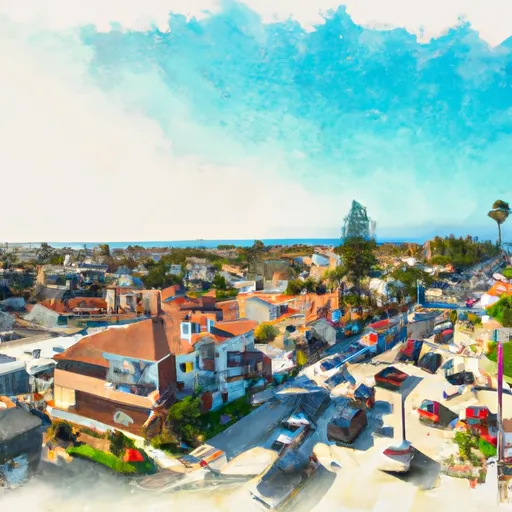-
 Snoflo Premium
Snoflo Premium
Get unlimited access to all our content
With no Ad interruptions! - Start Your Free Trial Login with existing account
Manhattan-Beach
Eden Index
Climate
9.1
•
Recreation
3.9
•
Community
5.6
•
Safeguard
6.4/10

Manhattan Beach, California, is a coastal city located in Los Angeles County. Known for its beautiful sandy beaches and vibrant community, it enjoys a Mediterranean climate, characterized by mild, wet winters and warm, dry summers. Average temperatures range from the mid-60s°F (18-20°C) during winter to the mid-70s°F (23-25°C) in summer, providing pleasant weather year-round.
The city's hydrology is primarily influenced by the Pacific Ocean. The South Bay area, where Manhattan Beach is situated, benefits from ocean currents and tides that contribute to the overall water quality. The region has implemented measures to protect the hydrology system, maintaining clean beaches and a healthy marine environment.
Manhattan Beach offers a variety of outdoor recreation opportunities. Its sandy shoreline spans approximately two miles, providing ample space for sunbathing, swimming, and beach volleyball. The city features numerous parks and green spaces, perfect for picnics, sports activities, and leisurely walks. The nearby Manhattan Beach Pier offers fishing and unique views of the coastline, while the Strand, a popular bike path, allows residents and visitors to enjoy scenic walks, runs, or bike rides along the beach. With its pleasant climate and diverse outdoor options, Manhattan Beach is a haven for those seeking an active and enjoyable coastal lifestyle.
What is the Eden Index?
The Snoflo Eden Index serves as a comprehensive rating system for regions, evaluating their desirability through a holistic assessment of climate health, outdoor recreation opportunities, and natural disaster risk, acknowledging the profound impact of these factors on livability and well-being.
Climate Health Indicator (CHI): 9.1
Manhattan-Beach receives approximately
342mm of rain per year,
with humidity levels near 58%
and air temperatures averaging around
17°C.
Manhattan-Beach has a plant hardyness factor of
10, meaning
plants and agriculture in this region tend to thrive here all year round.
By considering the ideal temperature range, reliable water supplies, clean air, and stable seasonal rain or snowpacks, the Climate Health Indicator (CHI) underscores the significance of a healthy climate as the foundation for quality living.
A healthy climate is paramount for ensuring a high quality of life and livability in a region, fostering both physical well-being and environmental harmony. This can be characterized by ideal temperatures, reliable access to water supplies, clean air, and consistent seasonal rain or snowpacks.
Weather Forecast
Streamflow Conditions
Ventura-San Gabriel Coastal
Area Rivers
Ventura-San Gabriel Coastal
Snowpack Depths
Ventura-San Gabriel Coastal
Reservoir Storage Capacity
Ventura-San Gabriel Coastal
Groundwater Levels
Recreational Opportunity Index (ROI): 3.9
The Recreational Opportunity Index (ROI) recognizes the value of outdoor recreational options, such as parks, hiking trails, camping sites, and fishing spots, while acknowledging that climate plays a pivotal role in ensuring the comfort and consistency of these experiences.
Access to outdoor recreational opportunities, encompassing activities such as parks, hiking, camping, and fishing, is crucial for overall well-being, and the climate plays a pivotal role in enabling and enhancing these experiences, ensuring that individuals can engage in nature-based activities comfortably and consistently.
Camping Areas
| Campground | Campsites | Reservations | Toilets | Showers | Elevation |
|---|---|---|---|---|---|
| Dockweiler Beach RV | 117 | 45 ft |
Nearby Fishing
Catastrophe Safeguard Index (CSI):
The Catastrophe Safeguard Index (CSI) recognizes that natural disaster risk, encompassing floods, fires, hurricanes, and tornadoes, can drastically affect safety and the overall appeal of an area.
The level of natural disaster risk in a region significantly affects safety and the overall livability, with climate change amplifying these risks by potentially increasing the frequency and intensity of events like floods, fires, hurricanes, and tornadoes, thereby posing substantial challenges to community resilience and well-being.
Community Resilience Indicator (CRI): 5.6
The Community Resilience Indicator (CRI) recognizes that education, healthcare, and socioeconomics are crucial to the well-being of a region. The CRI acknowledges the profound impact of these elements on residents' overall quality of life. By evaluating educational resources, healthcare accessibility, and economic inclusivity, the index captures the essential aspects that contribute to a thriving community, fostering resident satisfaction, equity, and social cohesion.

